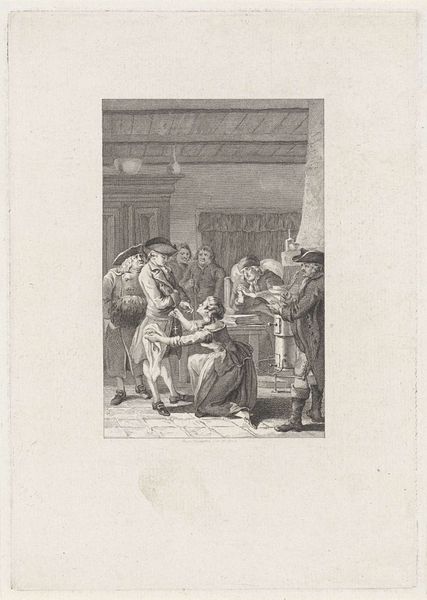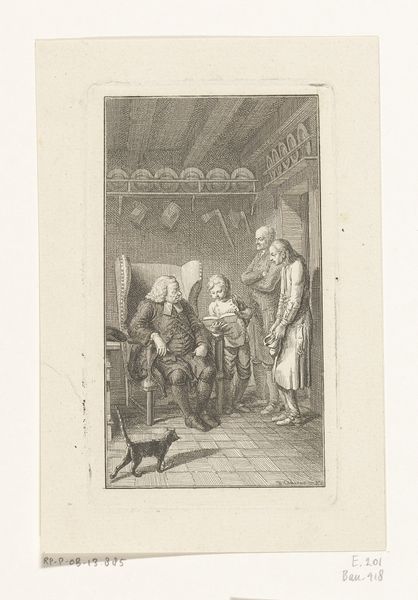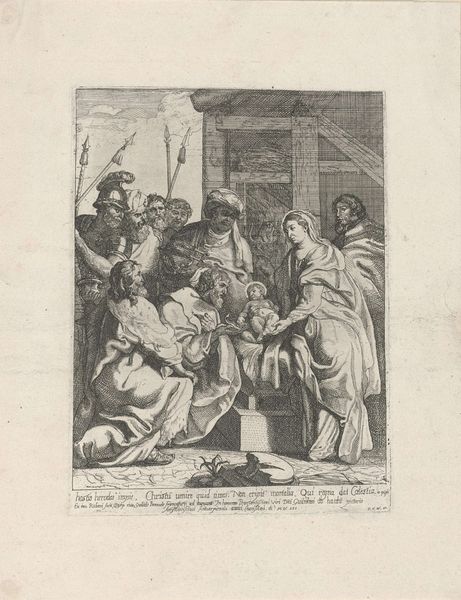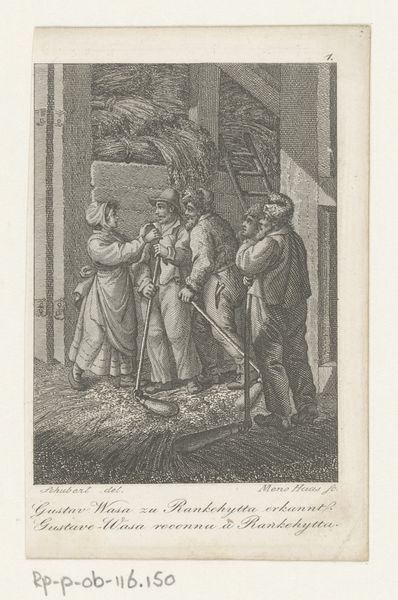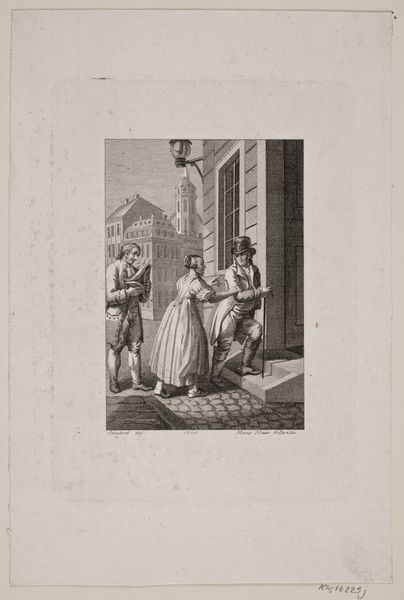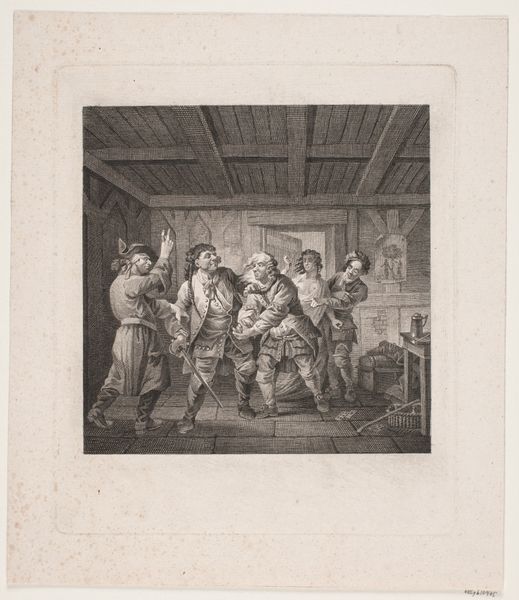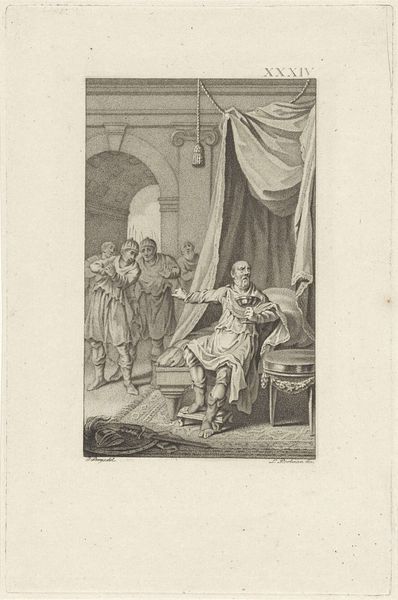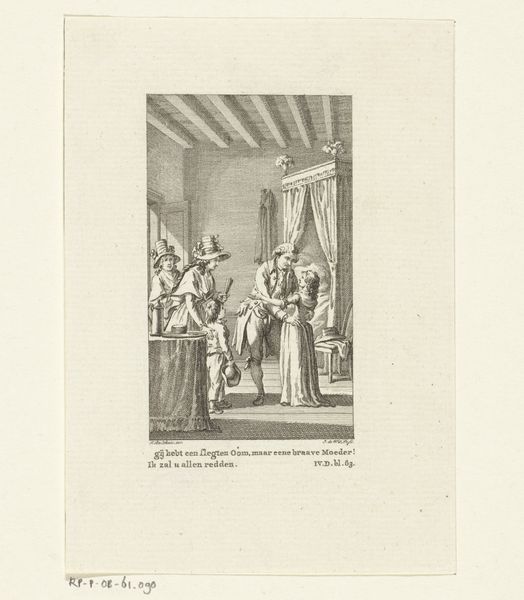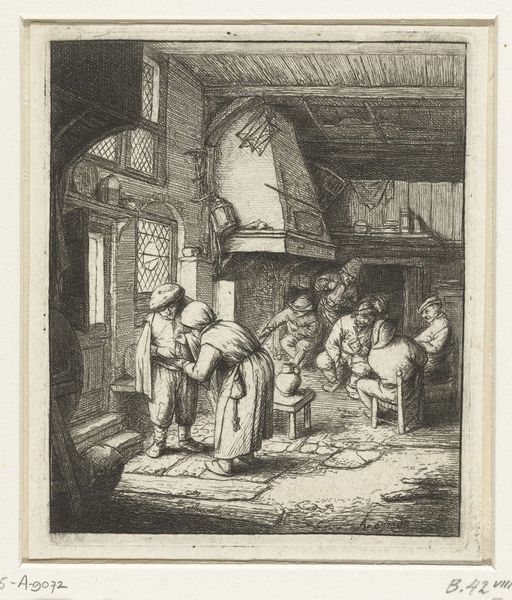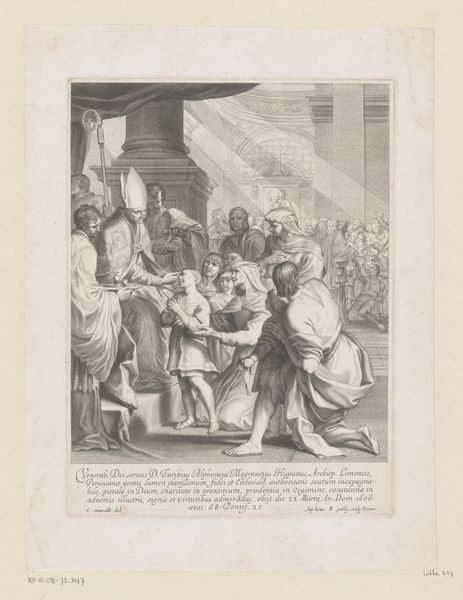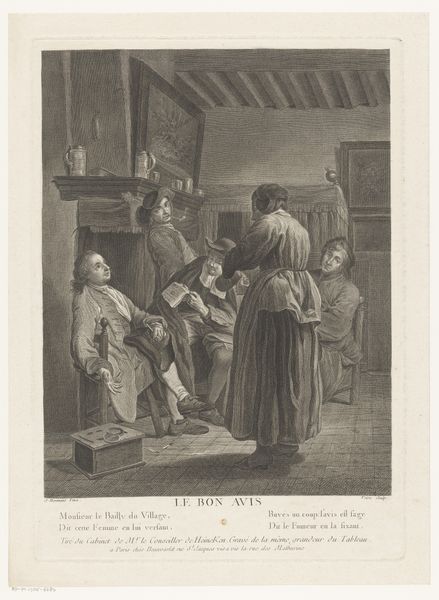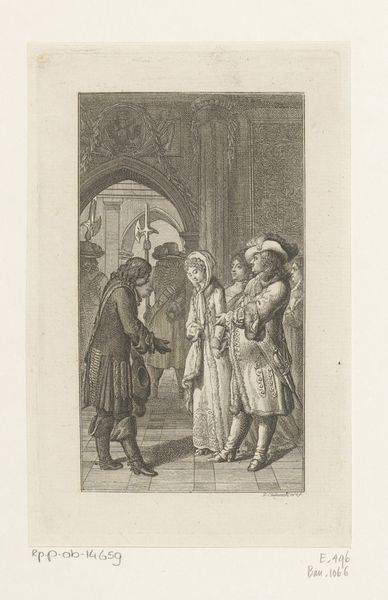
Crucifix en mariabeeld voor een Japanse delegatie in Nagasaki 1751 - 1816
0:00
0:00
print, paper, engraving
#
narrative-art
#
dutch-golden-age
# print
#
asian-art
#
old engraving style
#
figuration
#
paper
#
line
#
genre-painting
#
history-painting
#
engraving
Dimensions: height 189 mm, width 126 mm
Copyright: Rijks Museum: Open Domain
Editor: Here we have Reinier Vinkeles' engraving, titled "Crucifix en mariabeeld voor een Japanse delegatie in Nagasaki," dating from 1751 to 1816. The lines are incredibly fine, almost delicate, and the composition feels very staged. How do you read the visual dynamics at play here? Curator: The strict linearity, achieved through the meticulous engraving technique, is critical. Observe how Vinkeles employs hatching and cross-hatching, not to evoke texture in a mimetic sense, but to create a structural framework. Note the careful balance he strikes between light and shadow – not to create a sense of atmospheric depth, but to delineate forms and articulate the architectural space. The arrangement of the figures, carefully positioned on the tiled floor, underscores a deliberate construction rather than a naturalistic representation. Editor: I see that, especially in the almost geometric quality of the floor tiles and the stark contrast of the barred window. But what about the content? Does the narrative not factor into its meaning? Curator: Meaning is primarily derived from the internal relationships within the work itself. The "story," while present, is secondary. Consider how the artist deploys the horizontals of the floor and ceiling in conjunction with the verticals of the window bars and figures, creating a grid-like structure. The very act of "reading" this engraving becomes a process of deconstructing its formal architecture. Editor: So, it’s more about the 'how' than the 'what?' I guess I was so focused on the cross and the figures. Curator: Precisely. Focus on how line, shape, and composition construct meaning irrespective of subject matter. The internal logic of the visual elements is key. Editor: This gives me a completely new perspective on analyzing prints like this. It’s less about historical context and more about visual syntax. Thank you! Curator: Indeed, approaching art through its formal structure allows us to decode its inherent language and appreciate its inherent complexity.
Comments
No comments
Be the first to comment and join the conversation on the ultimate creative platform.
